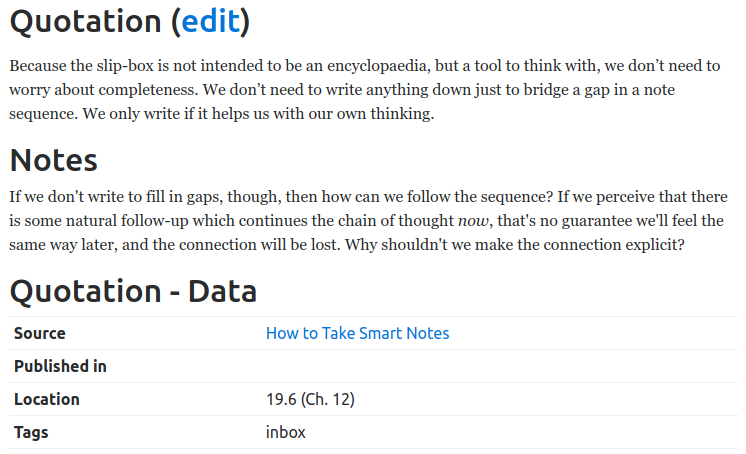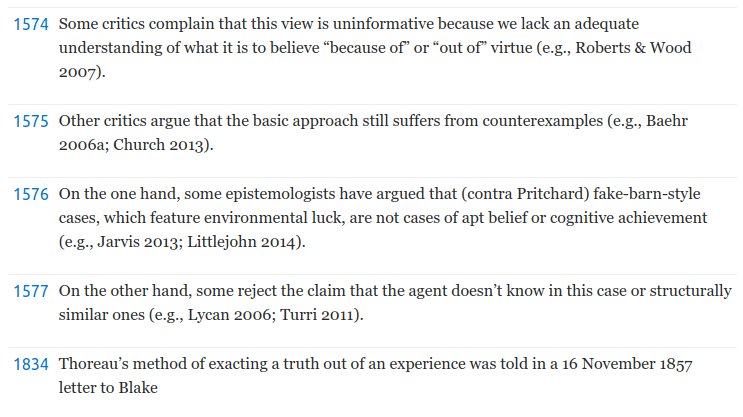Current note-taking strategy
When reading books, I take notes on the book--brief notes indicating points of interest as well as longer notes, especially if I disagree with some point. The typical direct product of these is a chapter-by-chapter summary, with a greater or lesser degree of detail depending on my interest.
For ebooks, my notes are often organized around highlights:

Each night, a cronjob runs that extracts my highlights and comments from calibre and imports them into my database:

The imported annotations are automatically tagged inbox, and I have a weekly repeating item on my schedule to process items from this inbox. These are presented to me in a simple list, with highlights from the same source sorted together:

If those annotations are citations to some other book or article, I add the article to zotero, in an inbox collection, which I also work through weekly (removing the inbox tag from the quotation, but retaining it as a record). Otherwise, I use them to construct my notes--either the summaries mentioned, or topical notes.
Highlights in my database can be transcluded into other notes or blog posts, like this:
Because the slip-box is not intended to be an encyclopaedia, but a tool to think with, we don’t need to worry about completeness. We don’t need to write anything down just to bridge a gap in a note sequence. We only write if it helps us with our own thinking.
Transclusion preserves the source of the quotation automatically. For annotations that aren't to be included directly, they remain linked in my database to the source document, included in searches, so I can refer to them in the future. My topic-oriented notes then come out like these notes on Newcomb's problem. I typically write them in emacs using org-roam:

A post-save hook I've written automatically synchronizes my notes in org-roam with my database, translating org-roam links to ID links in the database, which can then be automatically exported in a form like this blog post. My database has support for making only some notes or some parts of notes public, so I can use this single system for all stages of the process.
For PDFs, I usually read either in polar or on my tablet (in Moon Reader+), manually adding the annotations to my database, since it's impractical to handle automatically. For paper books, I take notes on paper. The rest of the process is the same.